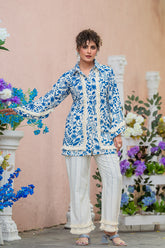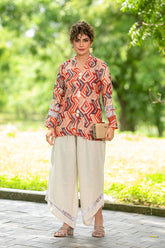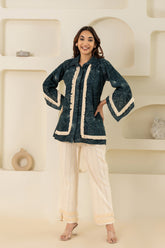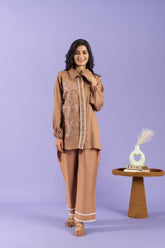Exploring the Role of Globalization in Transforming Indian Fashion Trends
What is the impact of globalization on the Indian fashion industry?
Globalization has transformed the Indian
How has globalization influenced Indian fashion trends?
Globalization has brought a remarkable shift in Indian
What are the positive and negative impacts of globalization on Indian clothing?
The positive impacts of globalization on Indian clothing include expanded markets, better opportunities for designers, and increased recognition of Indian ethnic wear. However, the rise of fast retailers has introduced challenges such as environmental concerns and ethical dilemmas in the textile and clothing industry. Addressing these issues is key to achieving sustainable growth.
How do Indian designers adapt to global fashion standards?
Indian designers skillfully adapt to global
How is traditional Indian fashion evolving in a globalized world?
Traditional Indian has embraced modernization through the incorporation of contemporary cuts, fabrics, and embellishments. Handloom sarees are being reimagined with modern patterns, while traditional outfits are updated to suit global preferences. This evolution ensures the versatility of Indian
What role does culture play in the evolution of Indian fashion ?
Indian culture remains central to the country's
How have traditional textiles been influenced by global trends?
Traditional textiles such as Banarasi silk have been reinvented to meet global trends. International collaborations have brought these fabrics into the
What are the popular fusion styles in Indian fashion today?
Fusion styles, including indo-western gowns and saree-dresses, are celebrated for their versatility. Suitable for weddings and casual occasions, these styles showcase the growing influence of the global
What is the rise of fast fashion in the Indian market?
Fast
How does fast fashion affect Indian clothing designers?
The fast
What are the implications of fast fashion on sustainability in India?
Fast fashion in India causes severe environmental damage, including water pollution and waste, while exploiting low-wage workers in unsafe conditions. However, rising consumer demand for ethical fashion is pushing fashion retailers to adopt sustainable practices like eco-friendly materials and fair labor. Embracing ethical fashion aligns with current fashion trends and India's rich textile heritage, offering a path to sustainability.
How do Indian youth respond to fast fashion trends?
Indian youth are avid consumers of fast
How are Indian fashion brands positioning themselves internationally?
Indian
What strategies do Indian fashion designers use to enter the global market?
Designers utilize strategies such as collaborations and showcasing at international
How does Bollywood influence international perceptions of Indian fashion ?
Bollywood plays a pivotal role in shaping global perceptions of Indian
What is the significance of Indian fashion weeks in promoting local brands globally?
Indian
Exploring the Latest Trends in India's Textile Industry
The Indian textile industry is seeing a resurgence of traditional techniques combined with modern innovations. The use of organic materials and experimental weaves meets demands in the globalHow is the demand for sustainable fashion impacting Indian textiles?
The demand for sustainable fashion in India is transforming the textile industry by encouraging the use of eco-friendly materials and ethical practices. Fashion retailers are adopting organic fabrics, aligning with current trends that emphasize sustainability and circular fashion. This shift supports traditional Indian textiles and craftsmanship, driven by increased consumer awareness and media influence. As a result, sustainability is becoming a key focus for innovation and growth in Indian textiles.
What are the emerging trends in Indian fabrics and embroidery?
Emerging trends include the fusion of traditional embroidery techniques with modern patterns. These innovations make heritage art forms relevant in the globalization of Indian
How do international collaborations affect the Indian textile market?
Collaborations with global designers introduce Indian textiles to a broader audience. This exchange enriches design vocabularies and boosts exports, fostering innovation in the process of globalization.
What is the future of Indian fashion in a global context?
The future of Indian
What challenges do Indian designers face in the global fashion landscape?
Indian designers face challenges such as intense competition and maintaining cultural authenticity. Addressing these requires strategic branding and innovation, ensuring they stand out in the competitive trend in the
How can the Indian fashion industry leverage globalization for growth?
The Indian
What role does technology play in shaping the future of Indian fashion ?
Technology is revolutionizing the Indian










